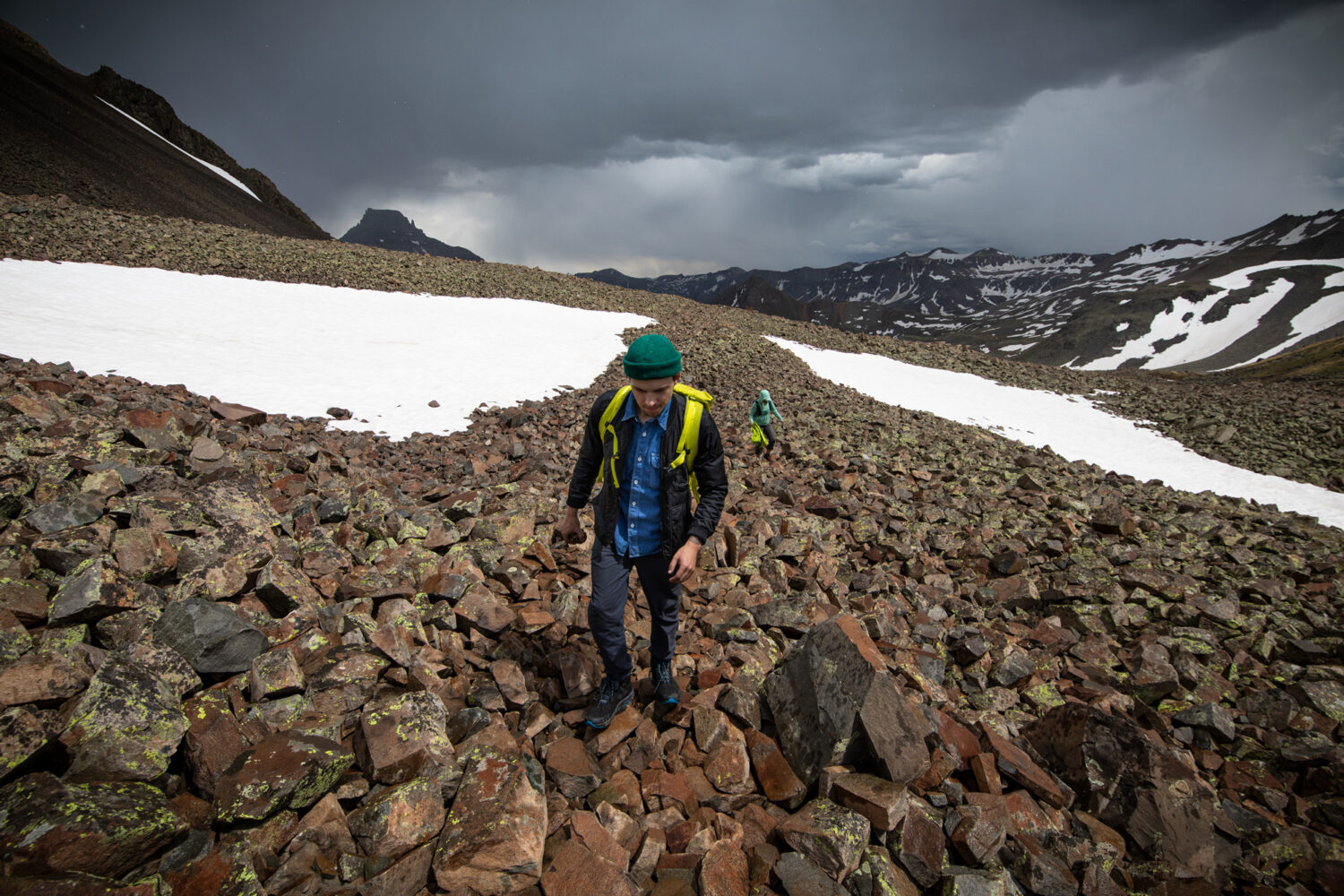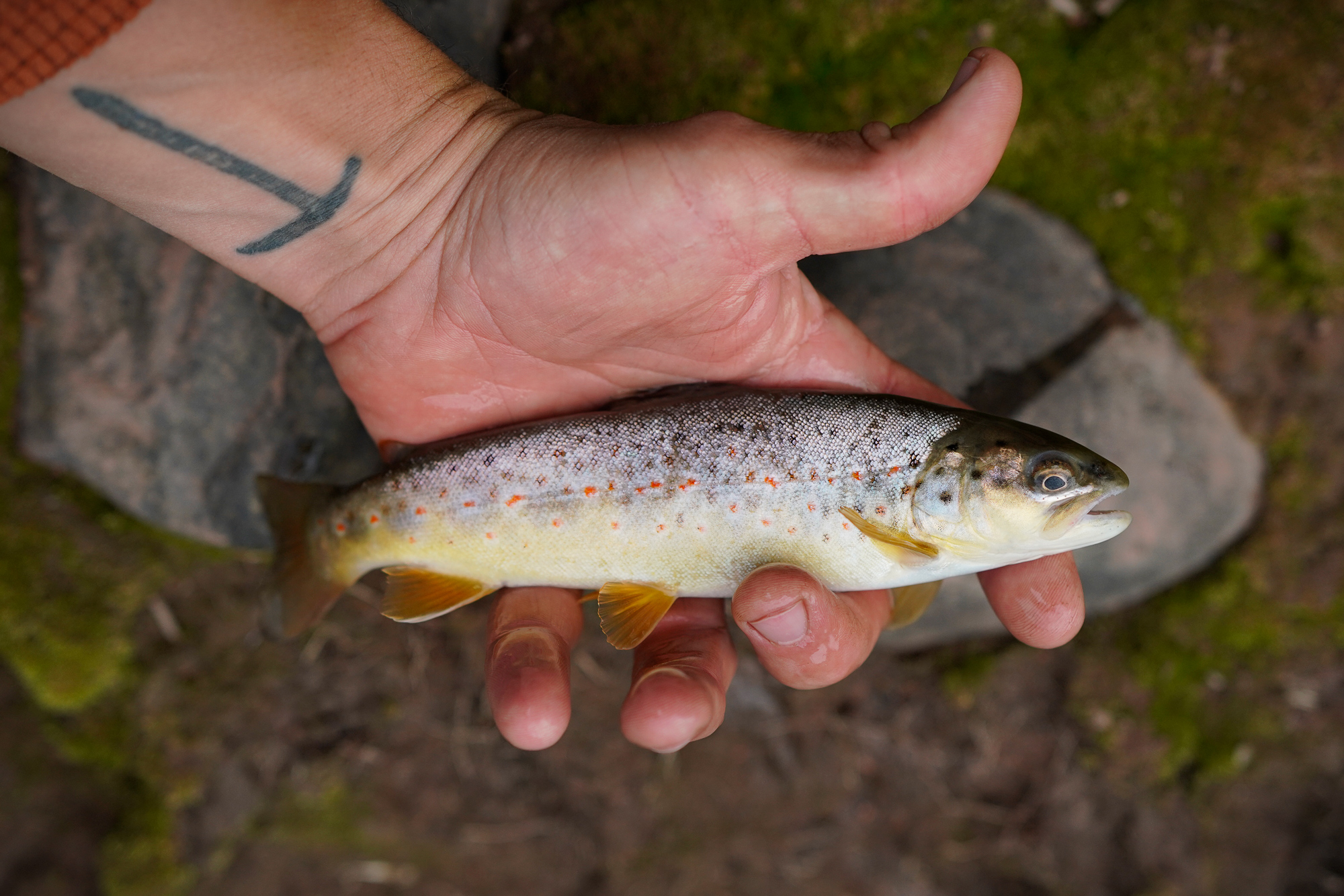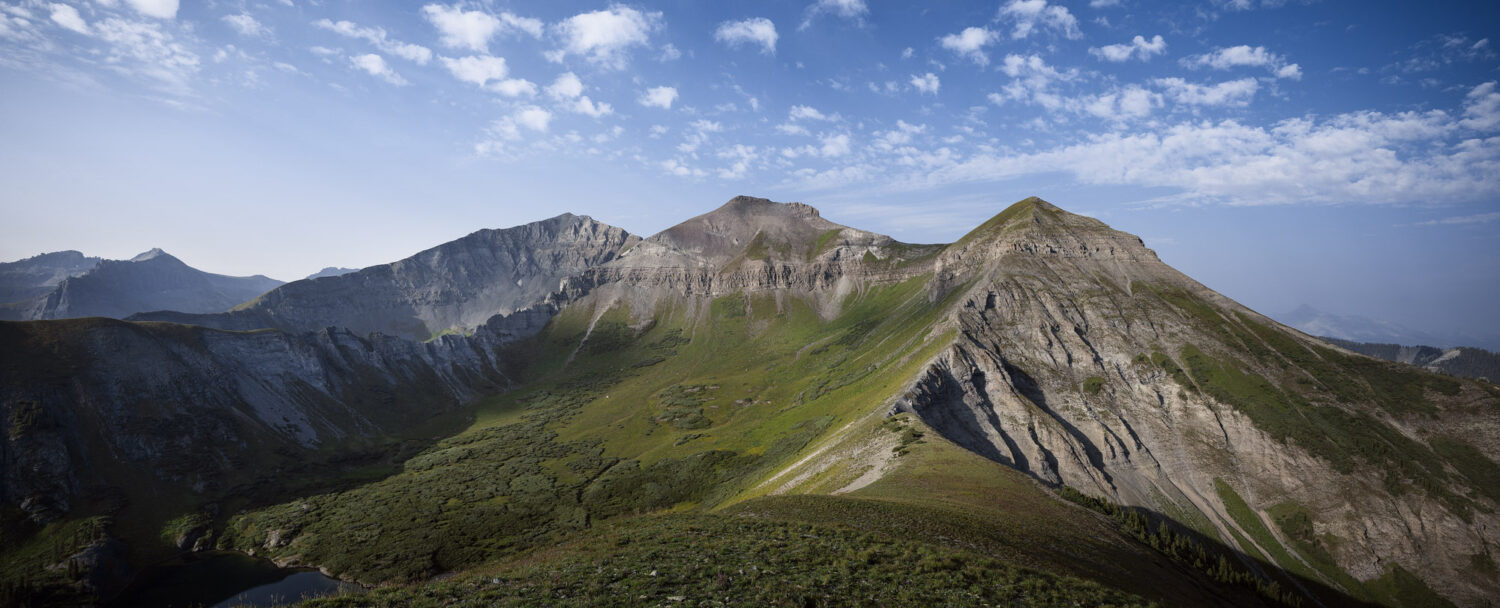
Colorado’s San Juan mountain range is arguably one of the most spectacular groupings of peaks within the state. Characterized by extremely steep (and often crumbly) multi-colored slopes interspersed with vibrant green meadows and expansive stands of aspens, this region in Southwestern Colorado was formed by the collision of two continental plates, an event that spurred expansive volcanic activity.
Because of their origin, the San Juans are highly mineralized, a quality that led to extensive mining throughout the turn of the century. Abandoned infrastructure and mine tailings (bright piles of excavated rock) can be seen everywhere, from the forested canyons to the steep hillsides and often high above the treeline. But despite the scars that early exploitation left on this landscape, the mountains are still just as rugged and beautiful as ever.

Our previous trip to the San Juan Range.
My first time visiting the San Juans was in the winter of 2013, and I was immediately captivated. Having spent almost five years living in Colorado’s Front Range, it was hard to believe that the mountains could get even more spectacular. I had to explore further.
In 2019, we returned to the San Juans to explore the northern leg of the historic alpine route between Lake City and Silverton. This network of high alpine roads took us deep into the mountains and brought me even closer to the multi-colored rock walls and towering volcanic peaks that had captured my heart during the first visit.
But as I drove home from that second trip, I was even more intrigued than the first time. I wanted to explore the valleys, peaks, and rivers further. I wanted to sleep under the stars and, more importantly, I wanted to share this magical place with those I cared about. Surely they would appreciate it as well.

After outlining my idea to spend a week adventuring near the mountain town of Telluride (in the heart of the San Juans), two of my brothers who live on the East Coast had purchased plane tickets and were eager to join my partner, Amanda, our dog, Royal, and me, in our Airstream. Would it be crowded? Undoubtedly. Would we be able to shower? Questionable. Would it be fun? Absolutely.
Our trip began in Denver, where we packed everyone’s belongings into the trailer. It was already feeling a little bit crowded, and I reflected on the fact that many of my favorite and most memorable adventures have often had an element of discomfort. It’s what we call type two fun; uncomfortable in the moment but enjoyable in hindsight.
Lucky for us, my brothers were less concerned with the lack of space and more excited by the self-contained habitat. With everything we needed for the adventure at hand, there was nothing holding us back.

Spectacular sunset colors over Antero Reservoir.
The San Juan mountain range is about as far away from Denver as you can get while still remaining in the state of Colorado, and getting there requires a combination of multiple highways and county roads.
Instead of giving up a whole day to driving, we decided to break up our travel and stop over at Antero Reservoir. While this stop was more of a convenience than a destination, its beauty was not lost on me. And for my brothers, who are more familiar with the Appalachians than the Rocky Mountains, this made for a spectacular first evening.

Water doesn’t get much fresher than this. Filling up and cooling off below Monarch Pass.
The next day we continued deeper into the mountains, traversing the Arkansas River Valley and climbing over Monarch Pass. If you ever find yourself in this part of Colorado, look out for a large pullout as you descend from Monarch Pass toward Gunnison. There is a fantastic mountain spring where you can fill up your water bottles, and the water is clean and refreshing.
Driving West, we passed through Gunnison, the Curecanti Recreation Area, Cimmaron, Montrose, and finally Ridgeway, the views getting more impressive around every bend in the highway. I don’t think it would be a stretch to call the final 40 miles of road from Ridgeway to Telluride one of the most beautiful drives I’ve experienced anywhere.
Having spent a full day in the truck, the sight of the river was just the motivation we needed to pull over and try our luck at some fly fishing. Even if we didn’t catch anything, it would be a great excuse to stretch our legs and cool off in the water. But as luck would have it, the fish were biting, and after getting used to the frigid river, we managed to hook into a few trout.













With so much at our fingertips and only a short window to see it all, we wasted no time heading into the town of Telluride the next day, en route to the highest free-falling waterfall in the state of Colorado. Bridal Veil Falls towers 1,650 feet above the town and is visible from the main street. After filling our water bottles, we began the climb, which was steep and rocky. For those of you who plan to visit this area, there are many other, smaller waterfalls along the route.









We memorialized our hike with a group photo below the Bridal Veil plunge pool while reflecting on how lucky we were to be enjoying each other’s company during such a challenging year. Retreating to town, we decided to continue the adventure and see how far we could make it up Imogene Pass. It’s not quite as infamous as Black Bear Pass (which is also in Telluride), but Imogene is no joke either. Its extreme exposure has led to a number of fatalities over the years. The good news is that if you keep your eyes on the road and take it slow, it’s very manageable. Driving over Imogene Pass will deliver you to the town of Ouray, another destination in the San Juan Mountains worth exploring.



As we drove up the narrow road, carved into the side of a steep mountainside, we spied crumbling mining ruins peeking out from the dense trees. Three thousand feet of climbing brought us to Savage Basin and the Tomboy mining camp, established in 1894. As one of the largest mining encampments in the state of Colorado, several hundred people (possibly as many as 1,000) called this location home. The site had a school, general store, stables, a YMCA (with a bowling alley and tennis courts), and a club that held dances for the local community. After the Tomboy Mine produced a considerable amount of gold, it was sold for two million dollars in 1897 but closed in 1928, and the town was abandoned.












